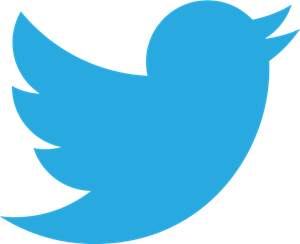Gold has all the potential to go unprecedentedly high. But silver will be gold on
Site:
Precious metals news
James Puplava predicts gold surpassing $10,000 by the decade's end. Having previously forecasted gold's rise when below $300, Puplava now points to demographic shifts, especially the retirement of baby boomers, as a key driver for rising precious metal prices. With China's declining workforce and the anticipated global depression between 2030 and 2036 by ITR economics, economic challenges loom. The current environment of high inflation and geopolitical tension may lead governments to print more money, possibly devaluing the dollar.
James Puplava predicts gold surpassing $10,000 by the decade's end. Having previously forecasted gold's rise when below $300, Puplava now points to demographic shifts, especially the retirement of baby boomers, as a key driver for rising precious metal prices. With China's declining workforce and the anticipated global depression between 2030 and 2036 by ITR economics, economic challenges loom. The current environment of high inflation and geopolitical tension may lead governments to print more money, possibly devaluing the dollar.
The Federal Reserve's restrictive monetary policy, aimed at combating inflation, has raised interest rates significantly since March 2022, impacting gold prices. Market insiders are closely watching for signs of the end of this rate hike cycle, which would bolster gold's value. Meanwhile, escalating global tensions, especially Russia's invasion of Ukraine and conflicts in the Middle East, are further influencing gold's surge. As of October 9, following an Israeli invasion, gold nears $2,000 per ounce. These gold price increases are set against a backdrop of significant global unrest and tragedy.
Prime Minister Datuk Seri Anwar Ibrahim revealed plans to explore the gold dinar as a reserve currency. This move aims to strengthen trade and reduce US dollar dependence. With the halal industry surpassing USD1 trillion, the dinar's significance is growing. Anwar noted the positive response to using local currencies in trade with countries like China, Indonesia, and Thailand.
In the backdrop of potential U.S. sanctions, Chinese experts highlight the strategic importance of gold. Researchers suggest strengthening gold reserves and pushing for gold-denominated trade to bolster the yuan. Taking cues from Russia's post-sanctions approach, they recommend pivoting towards more gold-centric financial strategies. The country's central bank has consecutively increased its gold reserves for several months, underscoring the metal's significance in China's financial resilience plan.
Oct 20, 2023 - 12:50:39 PDT
The US banking industry is facing a severe crisis with rising interest rates and turmoil in real estate, leading to bank branch closures and significant layoffs. Just in the first week of October, 54 bank branches were shut down. Moreover, the number of commercial Chapter 11 bankruptcies increased by 61% this year. Sales of previously owned homes have plunged to 2010 levels, and home foreclosures are up 34% from last year. The worsening economic conditions suggest a deepening recession is on the horizon, exacerbated by potential global conflicts. The situation is dire and expected to escalate.
 Fed Governor Admits: Digital Dollar Poses "Significant Risks" To Consumer Privacy, Financial System
Fed Governor Admits: Digital Dollar Poses "Significant Risks" To Consumer Privacy, Financial SystemOct 20, 2023 - 09:04:52 PDT
Federal Reserve Governor Michelle Bowman expressed strong concerns about a U.S. central bank digital currency (CBDC), highlighting "significant risks" to the financial system and consumer privacy. She questioned the clear benefits of a CBDC and warned of its potential impact on the banking sector. While the Fed remains cautious, the European Central Bank is pushing ahead with its CBDC efforts.
Gold is on the move. Silver is flying.
Due to excessive currency debasement, especially in the U.S., prices have skyrocketed. Canadian Prime Minister Justin Trudeau's threats to tax grocery stores, blaming them for inflation, is misguided. The main culprit behind inflation is the government's own policies: high taxation, excessive regulations, and rampant money printing. Ironically, politicians like Trudeau, after causing these problems, position themselves as the solution. Their "solutions" only exacerbate the issue, as adding taxes will inevitably lead to higher consumer costs.
The Fed's hubris in battling inflation could be leading to its own devastating "Waterloo." As debt levels rise alarmingly, the tipping point for financial fragility draws closer. The recent spikes in yields are clear warnings that the system is under duress. Despite their outward confidence, there are whispers within the Fed of halting rate hikes, revealing underlying panic.
December Gold Futures Break $2000.00 an Ounce today on multiple news fronts.
This week, a firmer trend in gold continued as markets realised the seriousness of the deteriorating situation in the Middle East. In European trade this morning, gold traded at $1979, up $46 from last Friday’s close and up $160 from the October 6 low. Silver was less responsive at $22.95, up a modest 25 cents from last Friday’s close.Open interest in gold remains remarkably low, as our next chart shows.This is possibly the most bullish chart we can show. It illustrates the very low level of speculative and hedging interest in gold, both of which can be expected to increase materially as the conflict in Israel evolves. Central to the problem, of course, is oil. Any attempt by the US and her NATO allies to intervene increases the likelihood of Iran closing off Hormuz at a time when western oil reserves are depleted. And according to StanChart, oil demand now exceeds pre-covid pandemic levels.Higher oil and distillate prices are also being encouraged by OPEC+, led ...
 Gold Hits Three-Week High on Fears of Sliding US Bond Yields and Wider Middle East Conflict
Gold Hits Three-Week High on Fears of Sliding US Bond Yields and Wider Middle East ConflictOct 20, 2023 - 06:35:56 PDT
Gold price reaches a three-month high of $1,985, driven by Middle East tensions and expectations of the Federal Reserve holding rates. A significant retreat in US Treasury bond yields, especially the benchmark 10-year yield pulling away from its 16-year peak, further bolsters gold's ascent.
Tucker Carlson's social media video titled "How to avoid World War III" has stirred controversy. In the video, Carlson and guest Vivek Ramaswamy suggest the U.S. assist Israel in targeting Hamas's top officials as an alternative to a ground offensive. They highlight the potential for escalating conflict involving major global powers, including the U.S., China, Russia, and Iran. The discussions imply grave consequences if tensions further escalate in the Middle East.
Oct 20, 2023 - 06:14:22 PDT
Rising oil prices could skyrocket to $140 per barrel, spelling disaster for the global economy. These levels risk accelerating inflation and stunting economic growth, pushing us towards a potential recession. Major financial entities, including the International Monetary Fund and European Central Bank, have expressed grave concerns.
Oct 20, 2023 - 06:09:31 PDT
President Biden on Thursday night delivered a speech from the Oval Office making his case for the US continuing to fund the proxy war in Ukraine and Israel’s onslaught on Gaza. Biden said he will ask Congress on Friday to authorize more spending for the Ukraine war and “unprecedented” military aid for Israel. Media reports … Continue reading "Biden Pitches Americans on Funding Wars in Gaza and Ukraine"
 To Prop Up Plunging Yuan, China Liquidated The Most US Securities In Four Years
To Prop Up Plunging Yuan, China Liquidated The Most US Securities In Four YearsOct 20, 2023 - 06:00:56 PDT
China has been aggressively reducing its US Treasury holdings, marking a significant 20 sales in the past 22 months. This major pullback, combined with the largest offload of US stocks by China in four years, is fueling concerns. Speculation suggests Beijing is preparing for geopolitical moves or defending a weakening yuan. Japan is also cutting back on US assets. Such substantial divestments by key players like China and Japan highlight rising apprehensions in the US debt market.
The People’s Bank of China provided a record short-term liquidity boost to stabilize rates and promote lending. This comes as Beijing addresses economic challenges, including a property downturn. While GDP and retail sales showed improvement, concerns about a potential liquidity crunch remain.
The economy is strong. The American consumer is resilient. Everything is great. At least that's the mainstream narrative. In this episode of the Friday Gold Wrap podcast, host Mike Maharrey explains why it's all just an illusion of prosperity. Along the way, he covers the September retail sales data, Federal Reserve Chairman Jerome Powell's speech this week, and the recent gold rally.
After the Natgas Breakout and now Breakdown, what's next for the volatile gas price?? Nothing can destroy an investment more than the volatile Natgas Market. In this update, I share my analysis of the natural gas inventories and why the UNG ETF is difficult to trade...











